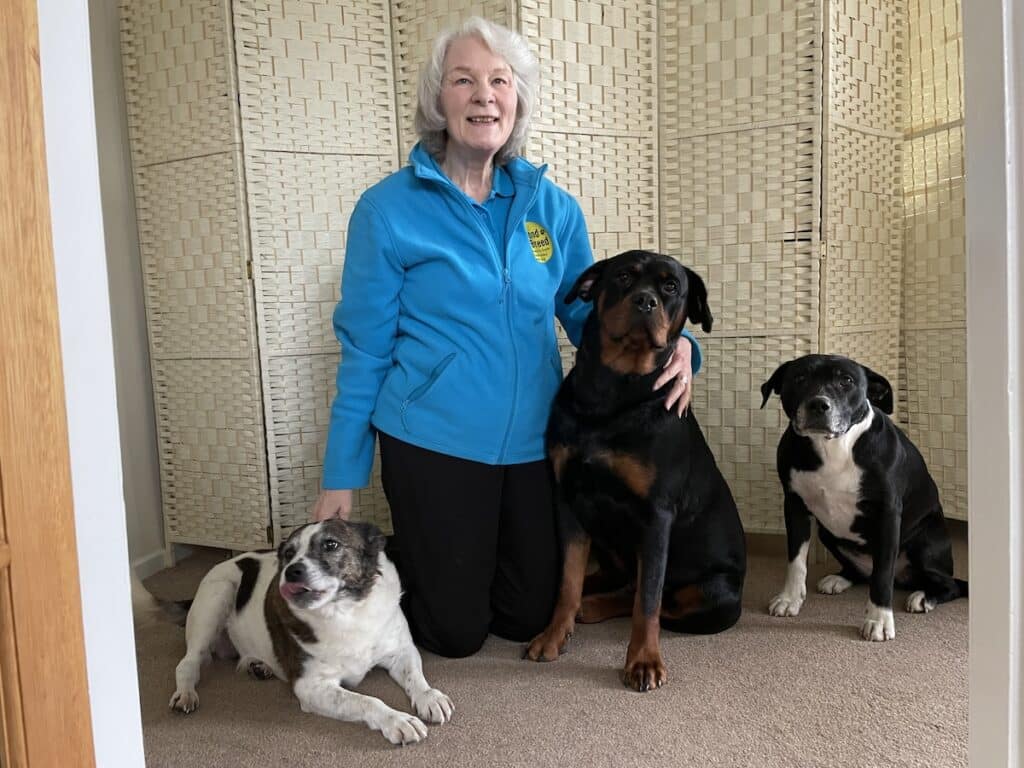Mindfulness is something we hear so much about but did you know that we can learn to live mindfully with our dogs too?
Canine behaviourist Caroline Wilkinson from Barket Place and Clinical Psychologist Linda Blair have teamed up to create the first ever Mindfulness programme for humans and dogs.
It’s a six week programme where you can learn how be mindful alongside your furry friend while gaining a greater understanding of canine psychology and behaviour.
First though, what is ‘Mindfulness?’
According to the dictionary definition, it’s, ‘a mental state achieved by focusing one’s awareness on the present moment, while calmly acknowledging and accepting one’s feelings, thoughts, and bodily sensations, used as a therapeutic technique.’
Mindfulness is a way of lowering stress levels, and if we’re stressed, this can have a negative impact on the relationships we have with our dogs.
We have a hormonal response and create adrenaline and cortisol which our dogs can smell and they get stressed too and feel they need to protect us.
But if we can find ways to eliminate those feelings of stress through mindfulness, the interaction we have with our dogs changes and instead we become friends.
If we want to truly learn what it means to live in the moment, taking a look at our dogs is a good place to start, so I spoke to Caroline, who lives in Bristol with her dogs Chester and Ezri, about the exciting new project.

Caroline, how did the idea for the programme come about?
I was working with Linda and her dogs and found we were spending a lot of our session-time together chatting about wider subjects, as we both have a background in psychology and behaviour. Linda with people – myself with dogs.
We both recognised the emotional effects our dogs have on us, and that we, in turn, can impart our emotions over to our dogs.
If owners were suffering stress, their dogs were too. So we decided to work together on a programme that would help both ends of the lead.
Can you tell me a little about how our dogs experience this stress?
Dogs experience stress in different ways. There’s positive stress where they might be enjoying exciting play with a friend, chasing a ball or squirrel – something fun!
Then there’s negative stress, perhaps caused by a stressful interaction with another dog when high levels of adrenaline and cortisol which is the stress hormone are produced.
These stress hormones can have negative implications on their physical – as well as their mental – wellbeing.
Stress can affect our dog’s gut health – with the gut being known as the second brain – which can lead to negative effects on the brain and the dog’s emotions too.
Physically, too much stress can lead to a suppressed immune system and skin issues, amongst other things.
Behaviourally, too much stress means the dog will be more likely to be nervous and reactive.
So small things like the postman calling or a car door banging, will cause a stress reaction.
The more cortisol they have in their system, the more likely they are to be hyper-alert to these situations, which in turn leads to more reactivity.

What are the emotional responses our dogs might be experiencing?
There are four main emotional responses: anxiety, phobia, fear, and anger. Anxiety will be the anticipation of danger, whereas phobias might be an irrational fear-response to everyday things – such as insects or noise.
A fearful response, or anger, are often displayed by actions that we might bundle under the term that our dog is being ‘reactive’.
Learning isn’t able to take place in a stressed dog. We need to get those stress levels under control before our dogs can learn to have a different emotional response to whatever it is in the world that causes them concern.
Is it easy to tell if a dog is stressed if they aren’t showing any obvious signs?
A stressed dog will often seek safety and try to avoid people, situations and other dogs. They also may not be able to consume food when highly stressed.
A relaxed dog will be playful, happy and able to eat. They will seek social interactions and learning opportunities.
So how can we help dogs who are stressed?
It can be very upsetting having a stressed dog but the good news is that there are ways we can help our dogs to feel more comfortable in the world.
When we work with dogs, we need to use as positive methods as we can.
When we pair our dog’s challenging behaviours with a punishment from our end, we can end up ruining our relationship with our dog and ultimately our dog won’t be able to learn new ways to respond to the world.
If we can slowly get them used to being around the thing they’re scared of – feeling happier about its presence – then we can gradually help them to overcome their fears.

How can we incorporate Mindfulness into how we are with our dogs on walks?
If you are someone who tends to over-communicate verbally with your dog on walks, you might be adding some extra tension into the situation.
In calm, quiet spaces it can be good to take the time to pause and enjoy some calm strokes of your dog. Stroking and playing with your dog increases oxytocin, the love hormone, which can be a way to lower stress.
But we need to make sure our dog enjoys it – so stroke them for three seconds, then remove your hand. If they lean into you for more, that means they enjoy it – but if they do a shake off or move away from you, then give them space.
If you have an anxious or reactive dog, calm body strokes can help them feel more physically present rather than have them fixating on the potential of a threat.
It also allows you both to focus more on the present moment – something that’s key in Mindfulness practices.

You talk about the lead in the series too, as that’s a physical connector?
Yes, absolutely. If we have reactive dogs, it’s easy to get in the habit of tightening the lead when we fear they will react to a situation.
When we tighten the lead, we put pressure on them so it’s uncomfortable for them physically and may change how their body language appears to other dogs.
Their chest may raise, their jaw may go tight and this affects how other dogs respond to them.
We would do better to swap this for more calm connections. Take a section of the lead and calmly run your hand up and down the lead.
You can combine some calm breathing (in through your nose and out through your mouth) to reduce your own tension at the same time.

What are your key tips for helping our dogs live a calmer life?
Use calm communication – be mindful that dogs CAN understand tone and emotion behind our words. Be consistent in the words you use.
Celebrate the importance of scent – the area of our dog’s brain responsible for understanding scent information is proportionally 40 times larger than ours!
Engaging this part of their brain will enrich their lives and help them to feel calmer. For sensitive dogs, encouraging them to sniff can lead to calmer behaviour – plus it releases happy hormones in the brain.
Play a sniffing game where you place food in long grass or hide a ball for them to find.
Have rest days – dogs deal with so much sensory overload every day that can be overwhelming and scary. Rest days allow you to focus on mentally rewarding activities in the home – such as training or scent work.
Make sure they get enough sleep. Like toddlers, overtired dogs become hyper. Adult dogs need roughly 12 to 16 hours and puppies 18 to 20 hours per day.
And finally, as long as your dog is happy with it – enjoy lots of cuddles on the sofa. This will help you have a calm, relaxed bond with your dog.
The six week Mindful Living and Our Dogs course is £59. Find out more at barketplace.uk
If you enjoyed this post, you might like to read 10 Mindfulness Lessons we can learn from our dogs or Expert advice on anxious dogs from Helen Motteram.





One Response
Great article! We often forget how similar dogs are to humans.